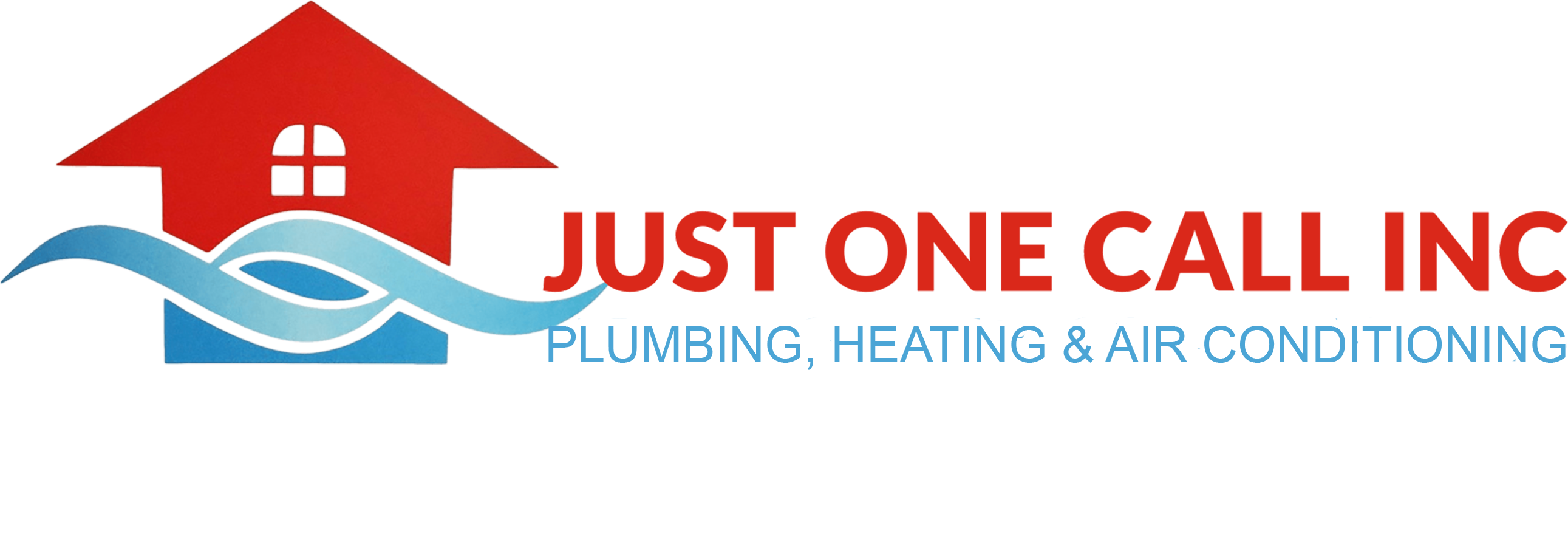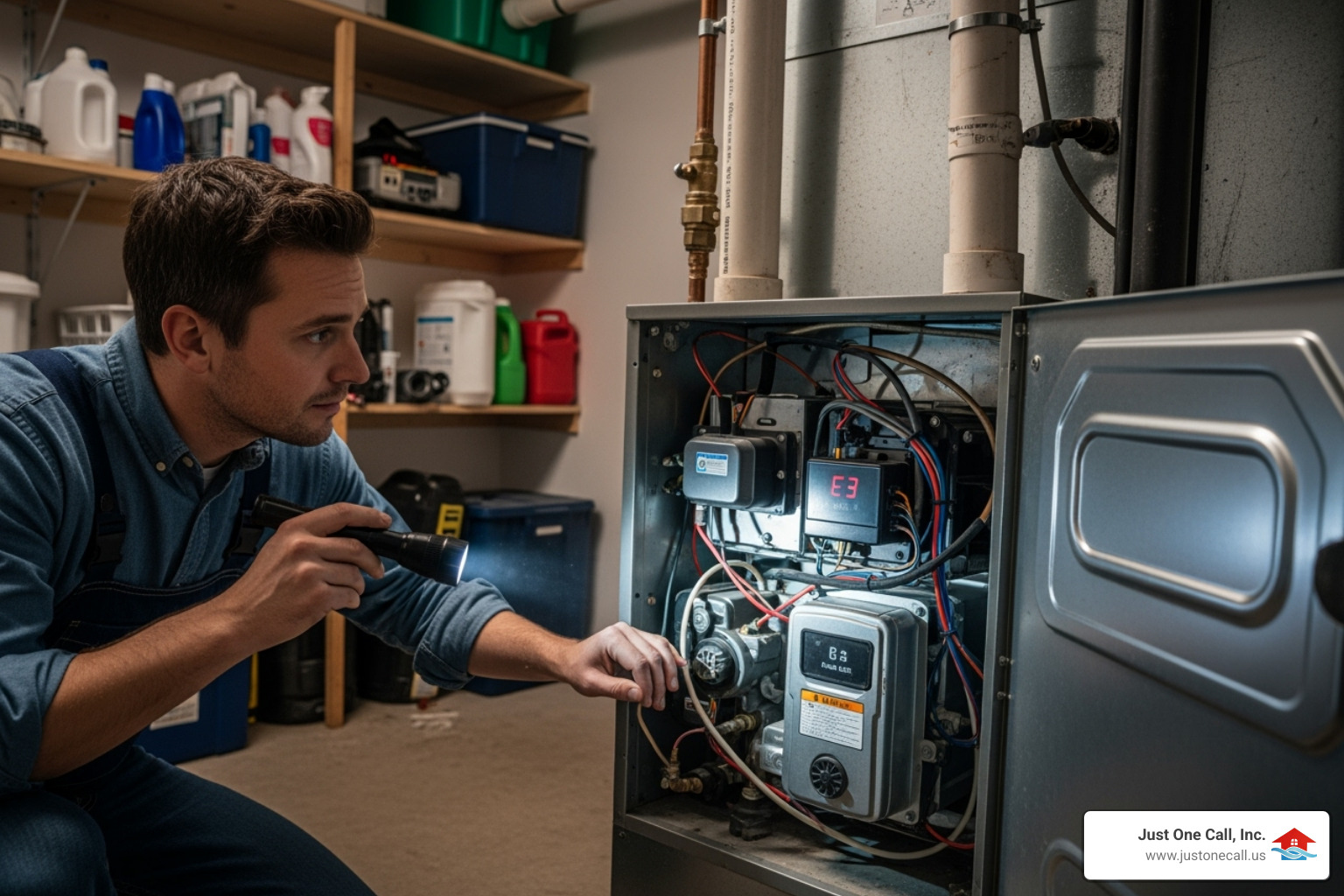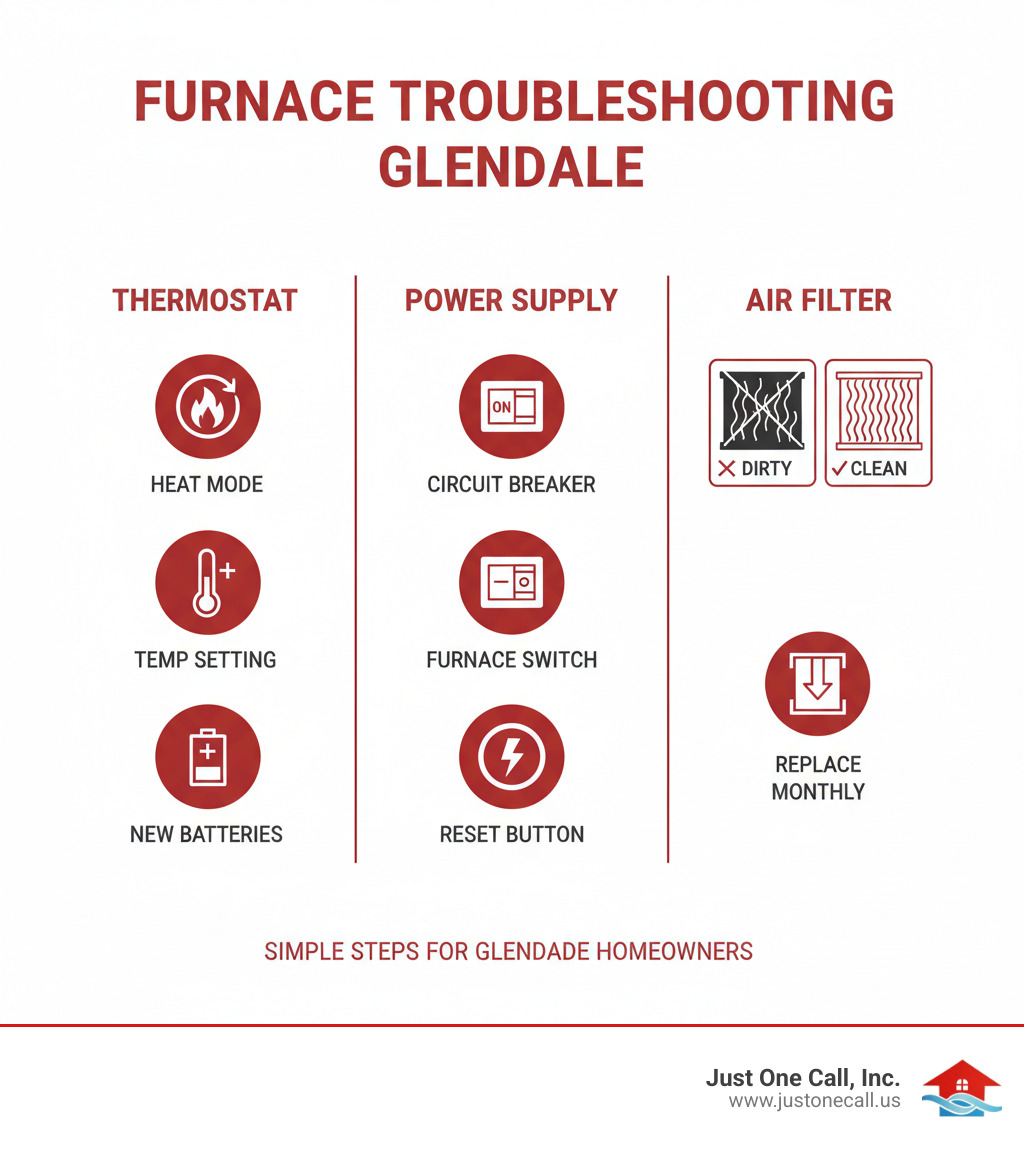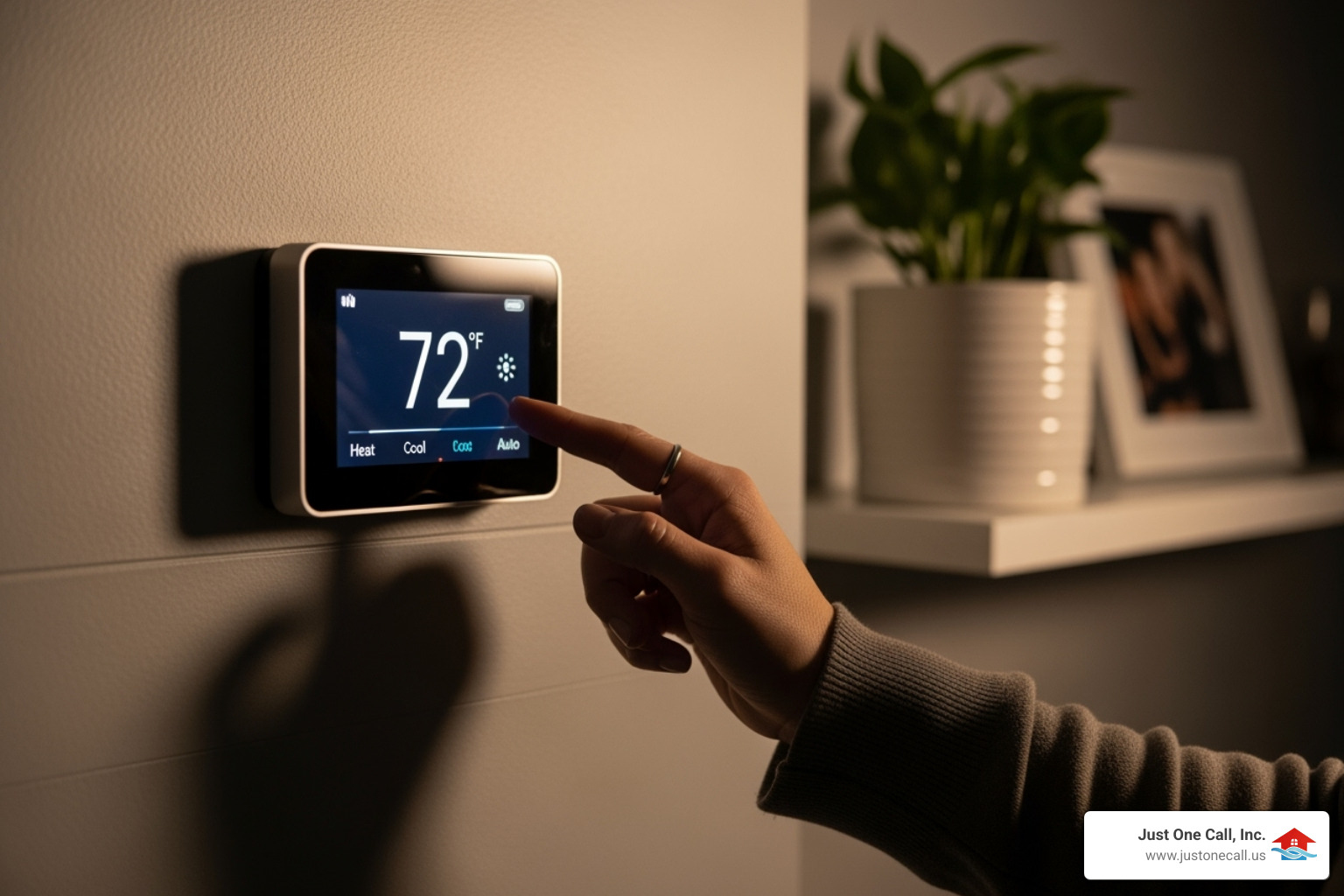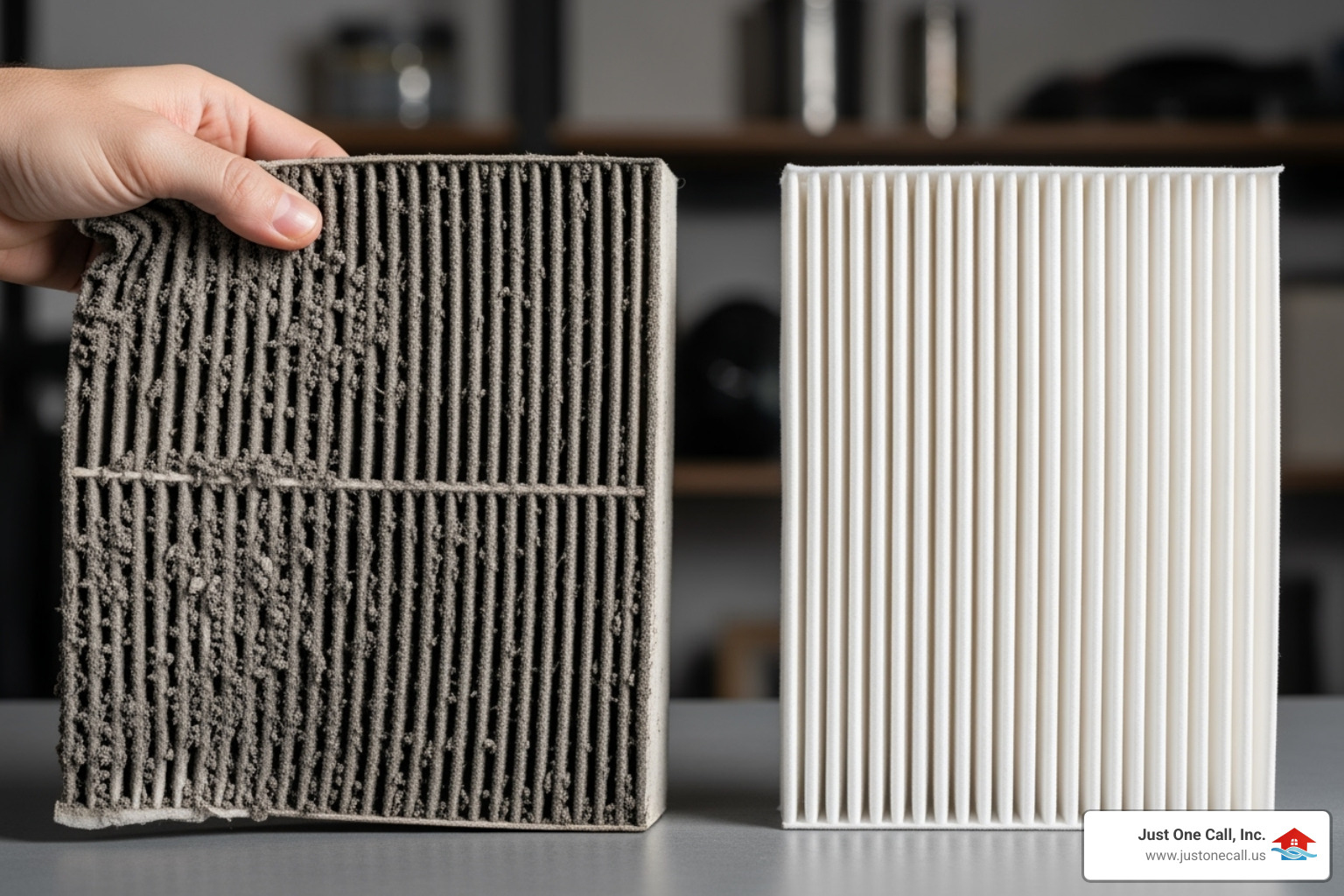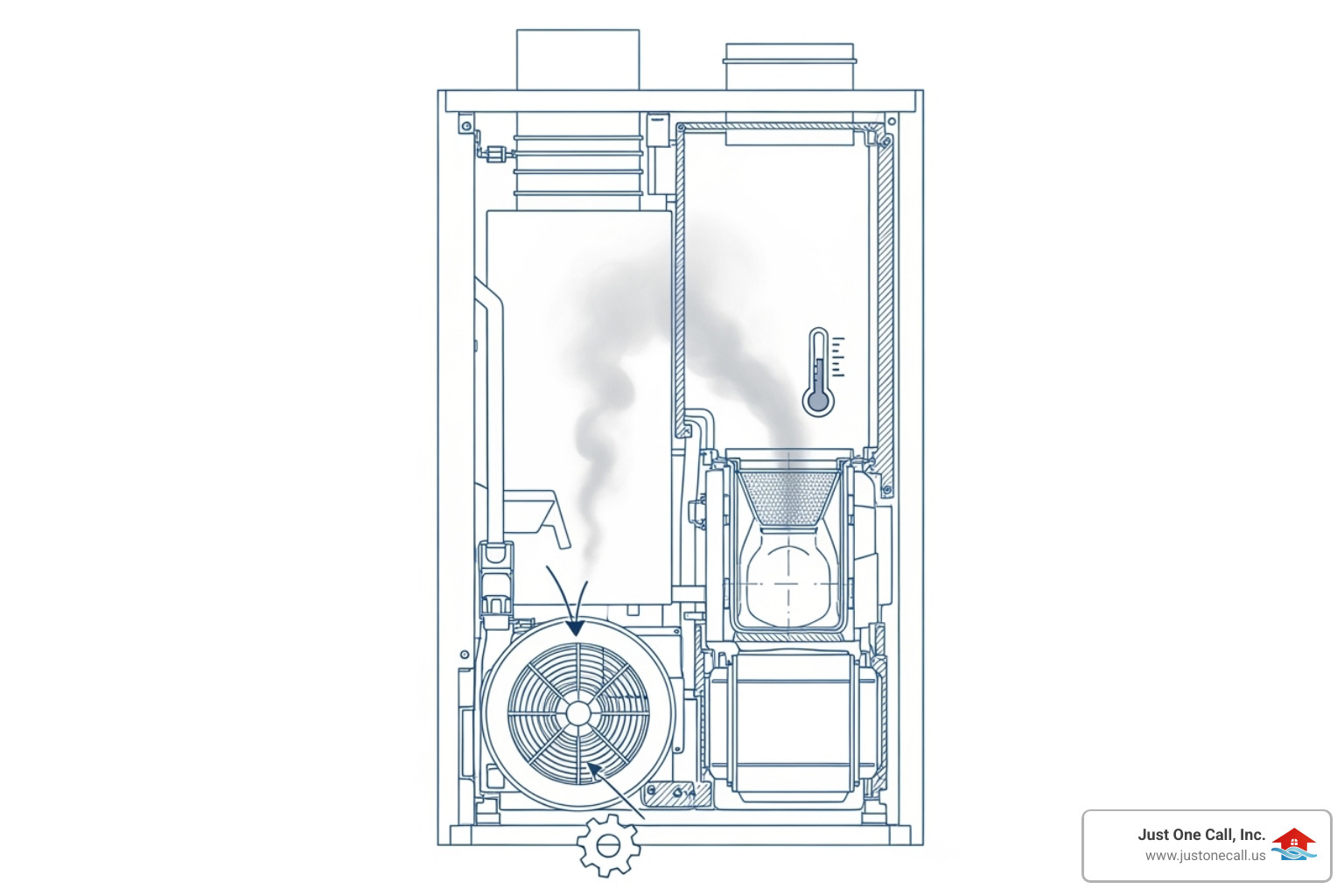When Your Glendale Furnace Goes Silent: Quick Fixes That Actually Work
Furnace troubleshooting glendale homeowners need starts with three simple checks that solve 80% of heating problems. Having your furnace suddenly stop working during a Glendale evening can be frustrating, especially when temperatures start to drop into the 40s and 50s.
Most common furnace fixes you can try right now:
- Thermostat Check – Verify it’s set to “heat” mode and 5 degrees above room temperature
- Power Supply – Look for tripped breakers labeled “furnace” or “HVAC”
- Air Filter – Replace if you can’t see light through it
- Gas Supply – Ensure the gas valve handle runs parallel to the pipe
- Reset Button – Press the furnace reset button near the motor
While Arizona is known for its heat, HVAC systems in Arizona typically last only 12-15 years due to extreme temperature swings and desert dust – shorter than the national average of 15-20 years. This means Glendale homeowners face more frequent furnace issues.
When temperatures dip into the 50s and 40s, a broken furnace can jeopardize the health of those with compromised immune systems. Many furnace problems have simple solutions, but some warning signs demand immediate professional attention for safety reasons.
The good news? A tripped breaker or clogged air filter – two of the most common causes – can be fixed in minutes. More complex issues like gas leaks, strange burning smells, or grinding noises require professional diagnosis to prevent safety hazards.
First-Response Furnace Fixes: What to Check Before You Call
Before calling for help when your furnace stops, many problems have simple solutions. These quick checks, which solve about 80% of furnace issues, can often restore your heat in minutes and are safe for any homeowner to perform.
Check Your Thermostat
More than half of “broken” furnaces are just thermostat mix-ups. First, ensure it’s set to “Heat” mode and the temperature is at least 5 degrees above the current room temperature. This simple oversight is surprisingly common.
Also, check for dead batteries; a dim or blank display is a key sign. Even hardwired thermostats often have backup batteries that need replacing. For smart thermostats, verify it’s not in vacation mode or following an old schedule. On older models, you can check for loose wires if you’re comfortable and gently clean any dust buildup with a soft brush.
Need more detailed guidance? Check out our comprehensive HVAC troubleshooting resource.
Verify the Power Supply
Even gas furnaces need electricity for the blower, ignition, and controls. Electrical issues cause about 40% of heating equipment breakdowns. Check your electrical panel for a tripped breaker labeled “furnace” or “HVAC.” To reset it, flip it firmly to “off” first, then back to “on.”
Also, look for the furnace power switch, often a standard light switch on or near the unit, which can be accidentally turned off. Some furnaces have a reset button near the blower motor; press it once if the system stopped mid-cycle. If it doesn’t work, wait 30 minutes before trying again, as it may be in a safety lockout.
Safety first: Stop and call a professional if you smell gas, see sparks, or are unsure about any electrical work.
Inspect the Air Filter
A dirty air filter is a top reason for furnace shutdowns. Restricted airflow makes the furnace overheat and shut off for safety.
To check, turn off the furnace, find the filter compartment (usually near the return air duct), and pull out the filter. If you can’t see light through it, it needs replacing. This is crucial in Glendale, where desert dust clogs filters quickly. Check your filter monthly and replace it every one to three months—more often if you have pets or allergies. A clean filter not only prevents shutdowns but also lowers energy bills and improves air quality.
For more tips on keeping your furnace running smoothly year-round, visit our furnace maintenance page.
Your Guide to Furnace Troubleshooting in Glendale
Once you’ve checked the basics, you might encounter more complex issues. This section details common furnace problems and helps you decide when a problem is beyond a simple DIY fix for furnace troubleshooting glendale.
Common Furnace Problems and DIY Furnace Troubleshooting in Glendale
Even after checking the thermostat, power, and filter, your furnace might still be acting up. Here are a few more things you can investigate.
For older gas furnaces, check if the pilot light is out. Instructions for relighting it are usually on the unit. If it won’t stay lit, the thermocouple (a safety sensor) is likely faulty and needs professional service.
Modern furnaces have electronic igniters. If you hear clicking but get no flame, the igniter may be dirty or failing. These parts are fragile, so professional flame sensor cleaning (typically $130-$400) is recommended to avoid costly damage.
Check that all heating vents are open and unobstructed by furniture or rugs. A simple blockage can make your furnace work too hard.
For gas furnaces, ensure the gas supply valve handle is parallel to the pipe (the open position). If you suspect other gas supply issues or smell gas, evacuate immediately and call 911 and your gas company.
High-efficiency furnaces have a condensate line that can clog with dust, triggering a shutdown. If you see water pooling near your furnace, turn off the power. You can try clearing the line with a wet/dry vac, but call a professional if you’re unsure, as leaks can also signal a dangerous cracked heat exchanger.
Warning Signs That Demand a Professional
While some furnace issues are DIY-friendly, others require expert help. Ignoring these can lead to costlier repairs or dangerous situations.
Strange noises like banging, grinding, or squealing point to mechanical problems like a failing blower motor, loose components, or a worn belt that need professional attention.
Unusual smells are a key indicator. A light burning dust smell is normal at the start of the season. However, a persistent burning or metallic smell suggests an electrical problem or overheating motor. The most critical warning is a rotten egg or sulfur odor, which indicates a gas leak. Evacuate your home immediately, do not use any electronics, and call 911 and your gas company from a safe location.
Inconsistent heating, such as some rooms staying cold, or climbing energy bills suggest your system is struggling with airflow or failing components. For older units, a pilot flame that is yellow instead of blue indicates combustion problems that need professional assessment.
For a comprehensive guide on what to watch for, check out our page on signs that you need furnace repair.
When to Call for Professional Furnace Troubleshooting in Glendale
You’ve tried the basic fixes, but your furnace still isn’t cooperating. Here’s when to call for professional furnace troubleshooting glendale services.
Furnace short cycling (turning on and off frequently) wastes energy and can indicate serious problems like a dirty flame sensor or failing heat exchanger.
If your blower runs constantly, even when the furnace isn’t heating, you may have a faulty limit switch or other internal electrical problems.
When your furnace shows no signs of life after you’ve checked the thermostat, power, and filter, you’re likely dealing with an internal part failure that requires professional diagnosis.
Safety concerns require an immediate call. This includes any persistent burning smells, metallic odors, or a rotten egg smell (gas leak). If you suspect carbon monoxide exposure (symptoms include headaches, dizziness, or nausea), evacuate immediately and call emergency services.
Modern furnaces often display diagnostic codes via flashing lights. While you can look them up, resolving these codes typically requires specialized knowledge and tools.
Don’t hesitate to contact us for emergency furnace repair if you’re experiencing any of these critical issues.
Glendale-Specific Furnace Considerations: Repair, Replace, and Costs
Living in Glendale brings unique challenges for heating systems. Our desert climate puts special demands on furnaces, affecting maintenance and replacement timing. Understanding these local factors helps you make smarter decisions about furnace troubleshooting glendale.
How Glendale’s Climate Affects Your Furnace
Glendale’s climate is tougher on furnaces than many realize. Chilly nights require a reliable furnace, but extreme temperature swings cause parts to expand and contract, leading to stress and failure. Desert dust is another major issue, clogging air filters rapidly and forcing the furnace to overwork, which causes overheating and premature wear.
These harsh conditions shorten the typical HVAC lifespan in Arizona to 12-15 years, compared to the 15-20 year national average. This means regular professional maintenance is essential, not just recommended, for Glendale homeowners.
Repair vs. Replace: Making the Smart Choice
Deciding whether to repair or replace your furnace involves several factors.
- Age: Repairs are usually best for units under 10 years old, while replacement is often wise for those over 15, especially given Arizona’s shorter HVAC lifespans.
- The 50% Rule: If a repair costs half as much as a new unit, replacement is the better investment.
- Energy Efficiency: Modern furnaces have AFUE ratings of 95%+, while older ones may be only 60-70% efficient. You can explore potential savings with high-efficiency equipment by checking out Carrier’s energy savings resources.
- Safety: A cracked heat exchanger or frequent breakdowns warrant replacement.
Common replacement options in Glendale include gas furnaces, electric furnaces, and heat pumps. For detailed information about gas furnace options, AirConditioner.com’s heater section offers comprehensive comparisons.
Understanding Furnace Repair Costs in Glendale
Understanding furnace repair costs in Glendale helps you budget. Most common repairs, like fixing thermostats or cleaning flame sensors, range from $130-$400. Costs vary based on the part needed and labor complexity.
- Thermostat issues: $75-$300
- Flame sensor cleaning: $130-$200
- Igniter replacement: $200-$400
- Blower motor problems: $400-$1,000+
- Heat exchanger replacement: Often exceeds $1,000, making furnace replacement a more common choice, especially on older units.
We provide clear, upfront estimates before any work begins, ensuring no surprises.
Frequently Asked Questions about Furnace Problems
As Glendale’s trusted heating specialists, we hear the same concerns from homeowners time and time again. Let’s tackle the most common questions about furnace troubleshooting glendale residents ask us.
How often should my furnace be serviced in Glendale?
Annual professional maintenance is essential for Glendale furnaces, ideally scheduled in the fall before it gets cold. A tune-up ensures peak efficiency (lowering energy bills), extends your system’s lifespan in our harsh climate, and includes critical safety checks for gas leaks and carbon monoxide risks. Plus, most manufacturers require annual service to keep your warranty valid.
Our comprehensive furnace inspection services are specifically designed to address Glendale’s unique climate challenges and keep your system running smoothly year after year.
What are the most common types of furnaces in Glendale homes?
Glendale homes feature a mix of heating systems. Gas furnaces are common in older homes, providing powerful heat but often with lower efficiency. Electric furnaces are found where gas lines are unavailable and are reliable but can be more expensive to run. Heat pumps are increasingly popular for new installations, offering efficient heating and cooling in one unit, perfect for our climate. Our technicians are trained to service everything from older models to modern high-efficiency units.
Can I perform furnace repairs myself to save money?
While some DIY tasks are encouraged, others are best left to professionals. You can safely change air filters, check thermostat settings, and reset circuit breakers. These steps can solve many common problems and save you a service call.
Avoid DIY repairs involving gas lines, complex electrical work, or internal components. Attempting these can be dangerous, cause more damage, and void your warranty. A professional can diagnose underlying issues that a simple part replacement might miss. When in doubt, call us. We can help you determine if it’s a safe DIY fix or if you need an expert for professional furnace troubleshooting glendale services.
Get Your Heat Back with Confidence
When your furnace stops working on a chilly Glendale evening, it can feel overwhelming. But here’s the good news: most furnace problems have simple solutions. By working through the basic furnace troubleshooting glendale steps we’ve covered – checking your thermostat settings, verifying the power supply, and inspecting that air filter – you can often restore warmth to your home in just minutes.
Your safety always comes first. While changing a filter or flipping a breaker is perfectly safe, never ignore warning signs like persistent burning smells, grinding noises, or the unmistakable rotten egg odor that signals a gas leak. These aren’t DIY moments – they’re clear signals to step back and call for professional help.
The reality is that some furnace issues need an experienced eye. A professional diagnosis isn’t just about getting your heat back – it’s about ensuring your family’s safety. Our trained technicians can spot problems that might not be obvious to homeowners, from hairline cracks in heat exchangers to subtle signs of carbon monoxide risks.
At Just One Call, Inc., we’ve built our reputation on being there when Glendale families need us most. Our experienced technicians understand both the common quirks of desert heating systems and the unique challenges that Arizona’s climate throws at your furnace. We believe in honest assessments, transparent pricing, and getting your home comfortable again without any runaround.
Don’t let a stubborn furnace turn your cozy evening into a cold, stressful night. Whether it’s a simple fix or something more complex, we’re ready to restore warmth and peace of mind to your home.
Contact us for all your heating service needs in Glendale, CA – because when it comes to your family’s comfort, just one call really is all it takes.
